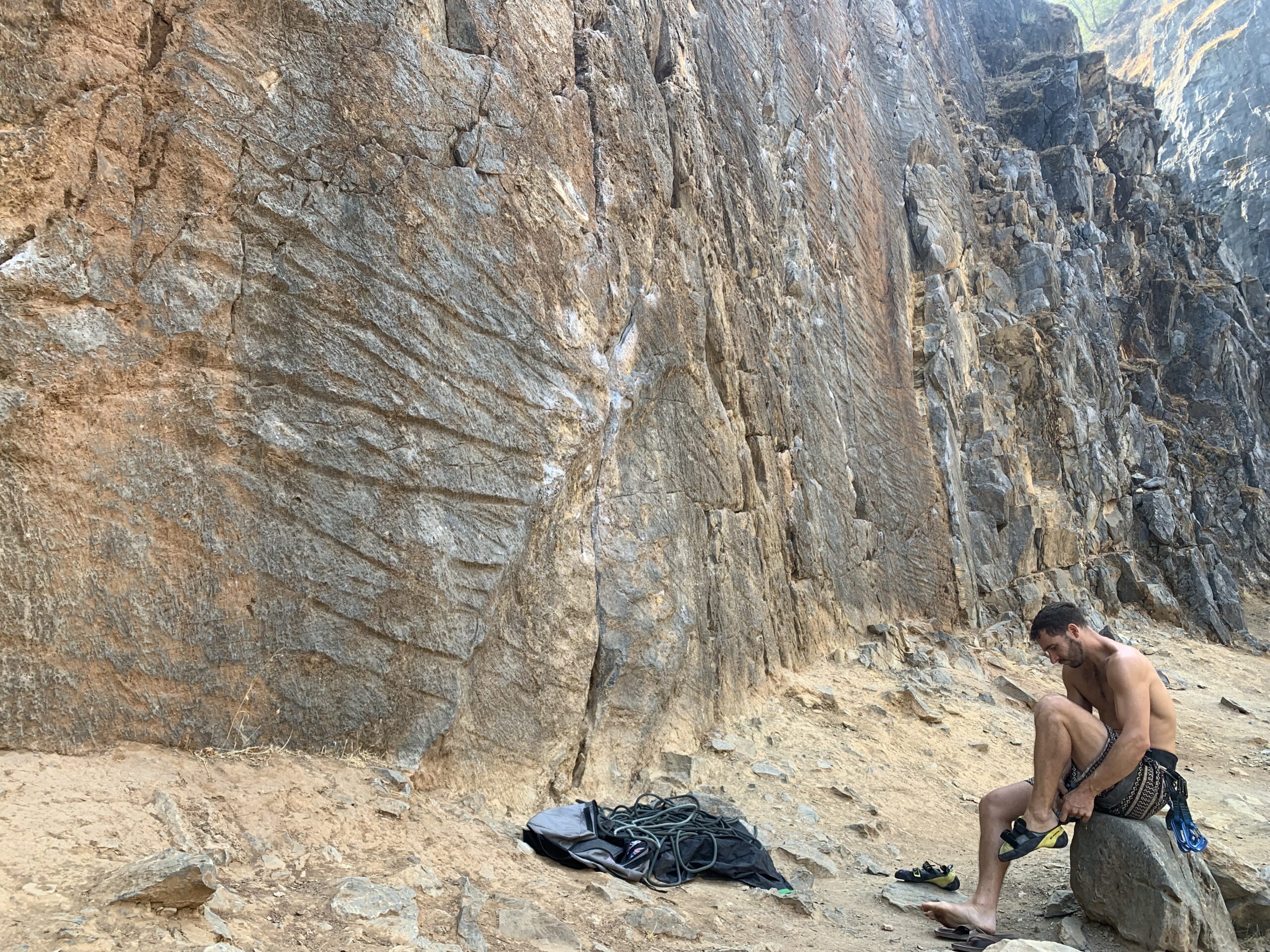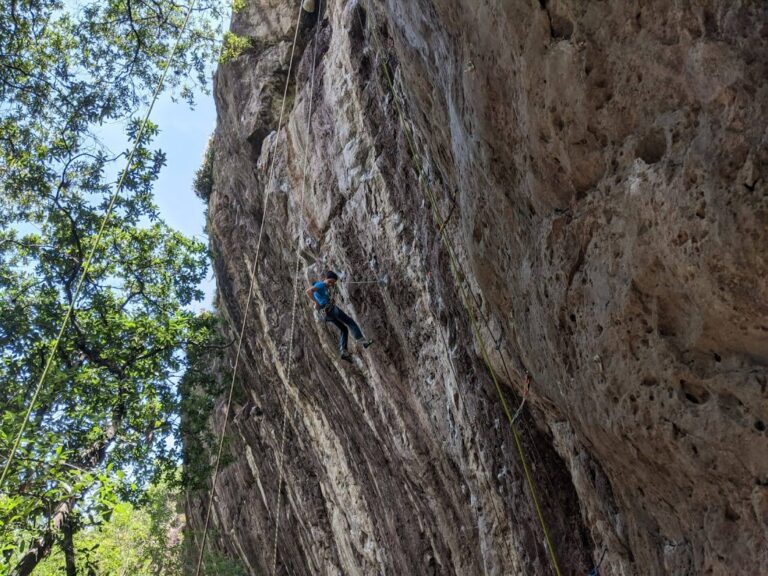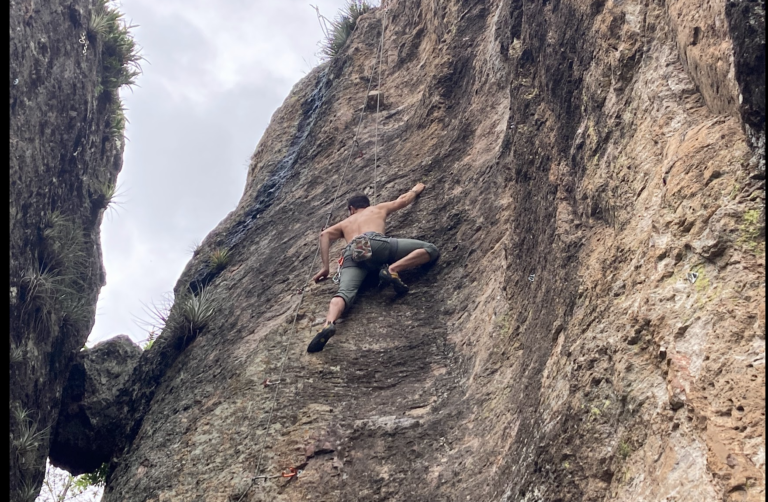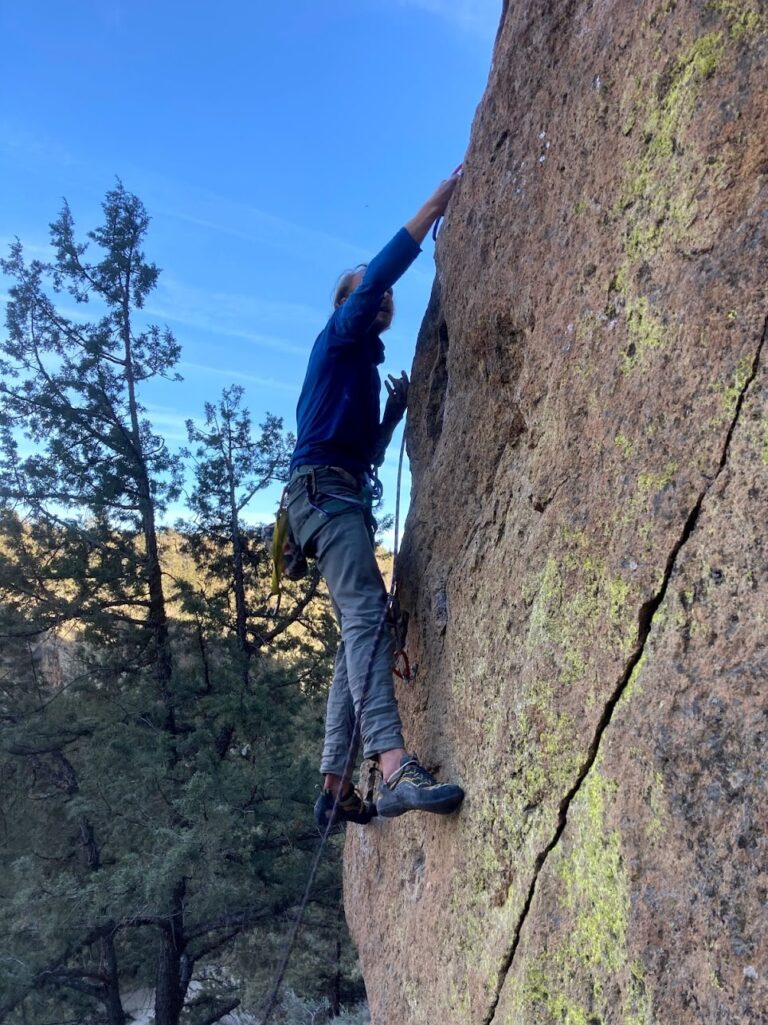How Should Climbing Shoes Fit (2024): The Right Amount of Tight
Last Updated on: 13th May 2024, 10:29 pm
If you’ve been battling stinky shoe syndrome like I have, you already know the importance of keeping your climbing shoes clean. But let’s take a step back (pun intended) and talk about something equally crucial: finding the perfect fit for your climbing shoes. We’re diving into the nitty-gritty of how climbing shoes should fit, so you can conquer those routes with confidence and style. Say goodbye to discomfort and hello to your new favorite climbing companions!
Table of Contents
- How should climbing shoes fit
- Why the right fit matters
- The goldilocks zone: How tight should climbing shoes be
- The “Break-In” myth: How do I know if my climbing shoes are to small
- How to take care of climbing shoes
- Wrap-up:
How should climbing shoes fit
Climbing shoes should fit snug, with little to no room for movement while avoiding bunching at the toe. Check to make sure the heel is snug, that it’s wide enough at the ball of your foot, and that your toes are touching the end without arching upward. A good fit helps you get more power from every move, keeps your foot from slipping, and feels comfortable during the climb.
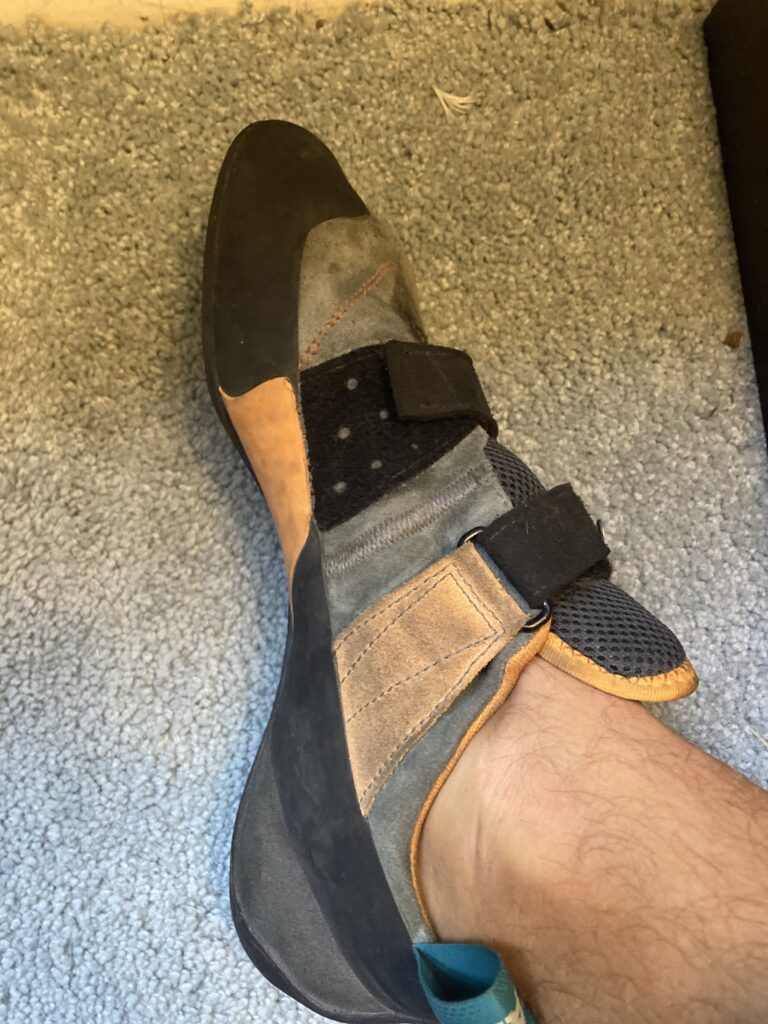
Avoid discomfort and optimize performance. Ensure snug heels, flat or gently curved toes, and no toe knuckle bunching. Get the perfect fit for a better climbing experience
Why the right fit matters
Climbing shoes are like your trusty sidekicks in the vertical world. A proper fit isn’t just about comfort—it directly impacts your performance and safety on the rock. Ill-fitting shoes can lead to unexpected slips, discomfort, and even injuries. So, let’s ensure your climbing shoes are your ultimate allies, not foes.
One of the tricky factors in finding the right shoes is knowing your size. Most climbing shoes are sold in European sizes, not US. If you don’t know what size you are, you can use our climbing shoe size calculator to automatically translate it for you.
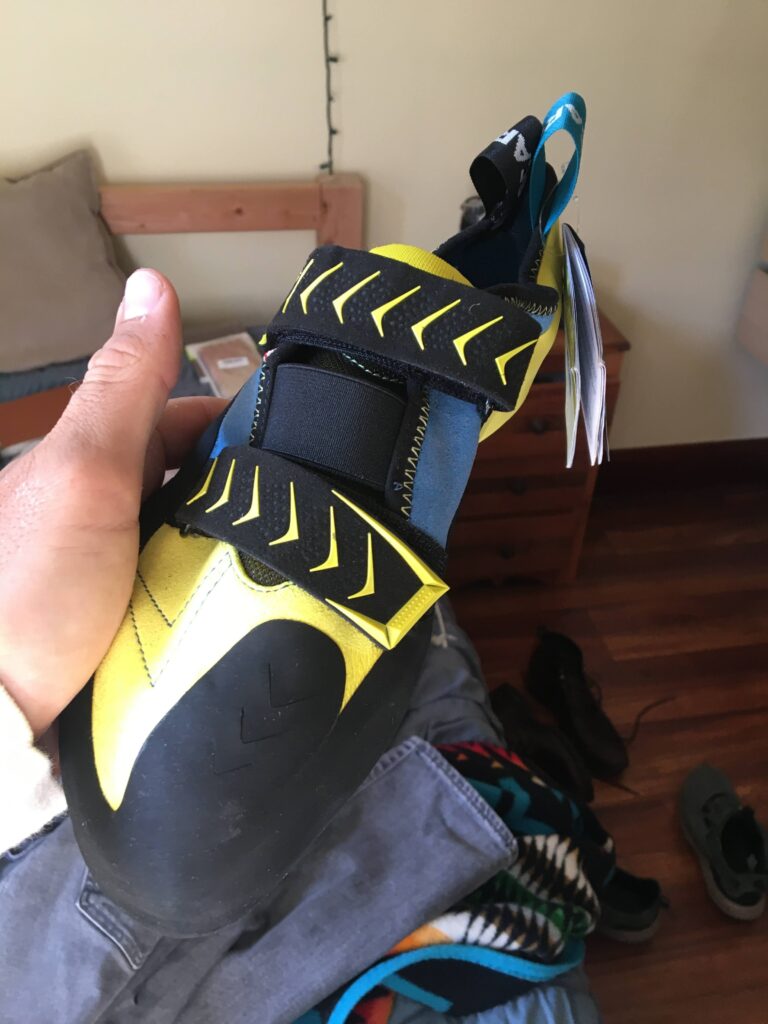
As you try on shoes, you’ll find that certain brands fit differently. La Sportiva tend to run narrow while Scarpa and Evolv have a reputation of fitting wider feet.
The goldilocks zone: How tight should climbing shoes be
Getting the fit just right is all about balance. You don’t want shoes that feel like they’re suffocating your feet, but you also don’t want them slipping off like they’ve got a mind of their own. Here’s your step-by-step guide to finding the Goldilocks fit for your climbing shoes:
- Sizing Matters, But So Does Your Purpose: Start with your regular shoe size, but be ready for adjustments. Climbing shoe sizes often differ from everyday footwear. Your climbing shoes should feel snug, but not painfully tight. If you’re into bouldering or aggressive climbing, you might opt for a more aggressive fit for precision. For longer routes or comfort-focused climbing, a slightly more relaxed fit could be your go-to.
- Toe Love and Sensitivity: Your toes are your connection to the rock. Make sure they’re flat or gently curved inside the shoe. They should lightly brush against the front, without being overly crunched. This sensitivity lets you feel the rock and maintain control.
- Beware the Dead Space: Dead space inside the shoe equals reduced performance. Check for any gaps or extra room, especially in the heel and arch areas. Dead space can lead to instability and decreased precision.
- The Power of the Heel: A snug heel fit prevents your foot from shifting while climbing. Your heel should feel securely held in place, without any discomfort or lifting.
- Trial and Error: Remember, different brands and models have varying fits. Don’t hesitate to try on multiple sizes and styles. Climbing shoe fit is personal, so be patient and persistent.
The “Break-In” myth: How do I know if my climbing shoes are to small
Let’s debunk a common misconception: climbing shoes don’t necessarily need a painful break-in period. Modern shoes are designed to fit comfortably right out of the box. While they might stretch a bit with use, your toes shouldn’t feel like they’re on the rack. If a shoe is painful from the start, it’s probably not the right fit.
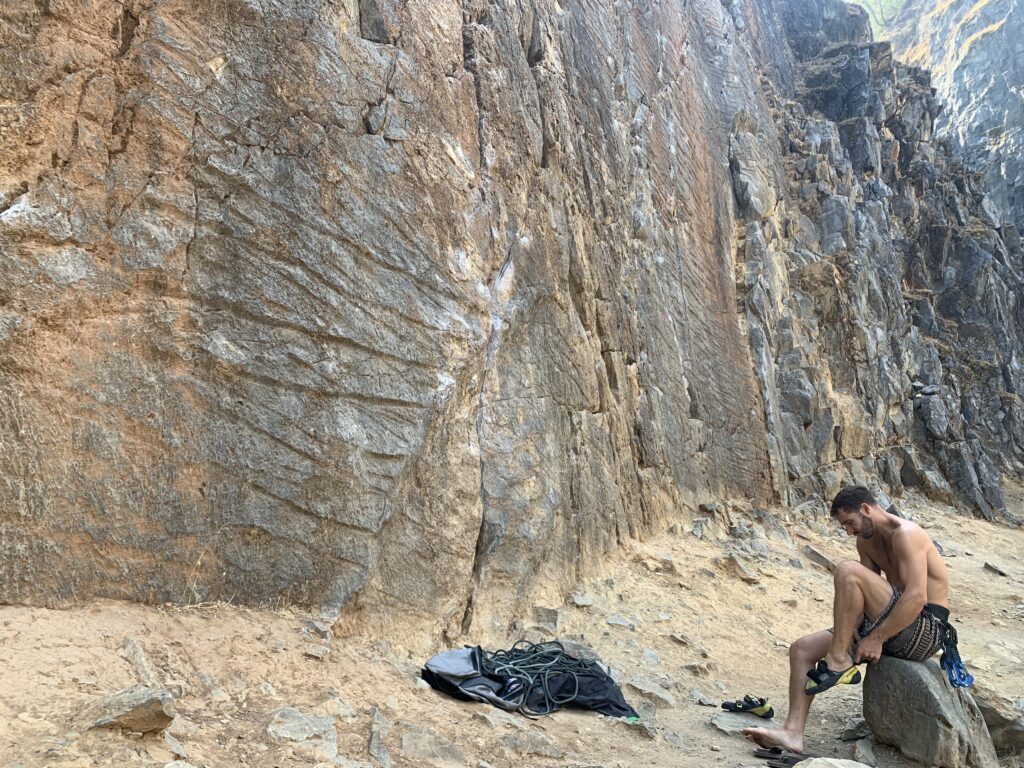
With that said shoes do get a little more comfortable with time, and are often never comfortable enough to want to spend all day in them. After a few sessions, the number above your toes and on the sides of the shoe will form to your foot making for a more natural fit. But if your climbing in moderate or aggressive style shoes, you’ll probably only want to wear the shoes while climbing. the discomfort of the snug fit is real, and not something most climbings want to put up with after the climb.
How to take care of climbing shoes
Once you put all the effort into finding the right pair of shoes, you want to make them last as long as possible. Occasionally cleaning your climbing shoes is a good way to remove dirt from the fabric that can cause breakdown in the long run.
If you start to wear through the rubber, you can also resole your climbing shoes which essentially gives them a second life. This is a great way to save a little bit of money and the trouble of getting a new pair of shoes to fit right.
Wrap-up:
Climbing shoes are more than mere gear—they’re an extension of your climbing prowess. A proper fit can elevate your climbing experience to new heights (literally). So, when you’re on the hunt for that perfect pair, remember these key points: snug without suffocation, sensitivity without strain, and a secure heel without discomfort.
Now that you’re armed with the knowledge of how climbing shoes should fit, go forth and conquer those crags with confidence. Happy climbing, and may your shoes fit like a glove (or a perfectly snug climbing shoe, in this case)!
